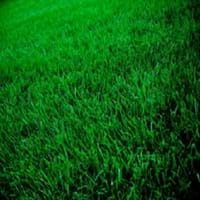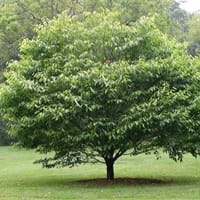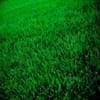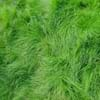Life Span
Perennial
Perennial
Origin
China
North America, United States, Northeastern United States, Mid-Atlantic United States, Southeastern United States, Central United States, South-Central United States, Texas, Mexico, Europe
Types
Bigleaf hydrangea, Hortensia, Smooth hydrangea, Oakleaf hydrangea, Annabelle
Carpinus caroliniana caroliniana, Carpinus caroliniana virginiana
Habitat
Forest edges, Hillside, Woods
Not Available
USDA Hardiness Zone
7-10
3-9
Sunset Zone
7, 9, 10
1a, 1b, 2a, 2b, 3a, 3b, 4, 5, 6, 7, 8, 9, 14, 15, 16, 17
Habit
Spreading
Spreading
Flower Color
Blue, Dark Purple, Light Purple, Red, White
Yellow, Yellow green
Flower Color Modifier
Bicolor
Bicolor
Fruit Color
Not Available
Brown
Leaf Color in Spring
Light Green, Yellow green
Green, Light Green
Leaf Color in Summer
Light Green
Dark Green
Leaf Color in Fall
Light Green, Yellow green
Yellow, Yellow green, Orange Red
Leaf Color in Winter
Light Green, Lemon yellow, Tan
Not Available
Leaf Shape
Oblovate
Pinnate
Plant Season
Spring, Summer, Fall, Winter
Summer, Fall
Sunlight
Full Sun
Full Sun, Partial Sun, Partial shade, Full Shade
Type of Soil
Loam, Sand
Clay, Loam
The pH of Soil
Acidic, Neutral
Acidic, Neutral
Soil Drainage
Well drained
Average
Bloom Time
Indeterminate
Spring
Tolerances
Cold climate, Drought
Wet Site
Where to Plant?
Ground
Ground
How to Plant?
Seedlings
Not Available
Plant Maintenance
Medium
Medium
Watering Requirements
Average Water Needs, Over-head watering, Requires watering in the growing season
Requires regular watering
In Summer
Lots of watering
Lots of watering
In Spring
Moderate
Moderate
In Winter
Average Water
Average Water
Soil pH
Acidic, Neutral
Acidic, Neutral
Soil Type
Loam, Sand
Clay, Loam
Soil Drainage Capacity
Well drained
Average
Sun Exposure
Full Sun
Full Sun, Partial Sun, Partial shade, Full Shade
Pruning
Prune to control growth, Remove dead leaves
Requires very little pruning
Fertilizers
All-Purpose Liquid Fertilizer, Nitrogen, Phosphorous
All-Purpose Liquid Fertilizer
Pests and Diseases
Red blotch
Canker, fungus
Plant Tolerance
Drought
Wet Site
Flowers
Insignificant
Yes
Flower Petal Number
Single
Not Available
Fragrant Leaf
No
Not Available
Foliage Texture
Medium
Medium
Foliage Sheen
Glossy
Glossy
Attracts
Bees, Flies
Not Available
Allergy
Chest tightness, Diarrhea, Dizziness, Nausea, Vomiting
Not Available
Aesthetic Uses
Beautification, Ground Cover, Landscape Designing, Showy Purposes
Showy Purposes, small hedge
Beauty Benefits
No Beauty Benefits
Good for the Scalp, Stops hair loss
Environmental Uses
Air purification, Food for insects, Prevent Soil Erosion
Air purification
Medicinal Uses
Fever, Kidney problems, Urinary tract problems
Anxiety, Bleeding, Cold, Cough, Cuts, Eye Infection, Fatigue, Fights Depression, Insomnia, Menstrual Disorders, Wounds
Part of Plant Used
Flowers, Root
Whole plant
Other Uses
Decoration Purposes, Showy Purposes
Used as firewood, Used as Ornamental plant, Used for its medicinal properties, Used for woodware
Used As Indoor Plant
No
No
Used As Outdoor Plant
Yes
Yes
Garden Design
Lawns and Turf
Hedges, Screening / Wind Break, Shade Trees, Street Trees
Botanical Name
EREMOCHLOA ophiuroides
CARPINUS caroliniana
Common Name
Centipede Grass
American Hornbeam, Musclewood, blue-beech, Ironwood
In Hindi
Hydrangea
अमेरिकी हानबीन
In German
Hortensie
Amerikanische Hainbuche
In French
Hortensia
Charme de Caroline
In Spanish
Hortensia
Carpinus caroliniana
In Greek
υδραγεία
american γαύρο
In Portuguese
Hortênsia
Carpinus caroliniana
In Polish
Hortensja
Grab amerykański
In Latin
Hibiscus
american hornbeam
Phylum
Embryophyta
Magnoliophyta
Class
Liliopsida
Magnoliopsida
Order
GLUMIFLORAE
Fagales
Family
Poaceae
Betulaceae
Genus
Ophiuroides
Carpinus
Clade
Angiosperms, Monocots
Angiosperms, Eudicots, Rosids
Tribe
Andropogoneae
Not Available
Subfamily
Sorghum
Not Available
Importance of Centipede Grass and American Hornbeam
Want to have the most appropriate plant for your garden? You might want to know the importance of Centipede Grass and American Hornbeam. Basically, these two plants vary in many aspects. Compare Centipede Grass and American Hornbeam as they differ in many characteristics such as their life, care, benefits, facts, etc. Every gardener must at least have the slightest clue about the plants he wants to plant in his garden. Compare their benefits, which differ in many ways like facts and uses. The medicinal use of Centipede Grass is Fever, Kidney problems and Urinary tract problems whereas of American Hornbeam is Anxiety, Bleeding, Cold, Cough, Cuts, Eye Infection, Fatigue, Fights Depression, Insomnia, Menstrual Disorders and Wounds. Centipede Grass has beauty benefits as follows: No Beauty Benefits while American Hornbeam has beauty benefits as follows: No Beauty Benefits.
Compare Facts of Centipede Grass vs American Hornbeam
How to choose the best garden plant for your garden depending upon its facts? Here garden plant comparison will help you to solve this query. Compare the facts of Centipede Grass vs American Hornbeam and know which one to choose. As garden plants have benefits and other uses, allergy is also a major drawback of plants for some people. Allergic reactions of Centipede Grass are Chest tightness, Diarrhea, Dizziness, Nausea and Vomiting whereas of American Hornbeam have Not Available respectively. Having a fruit bearing plant in your garden can be a plus point of your garden. Centipede Grass has no showy fruits and American Hornbeam has no showy fruits. Also Centipede Grass is not flowering and American Hornbeam is flowering. You can compare Centipede Grass and American Hornbeam facts and facts of other plants too.





